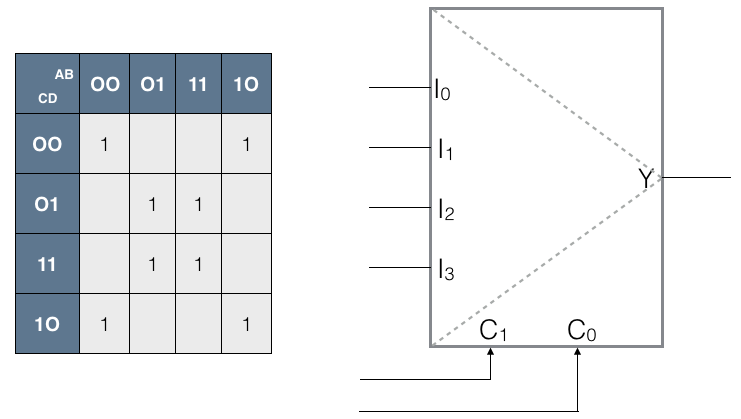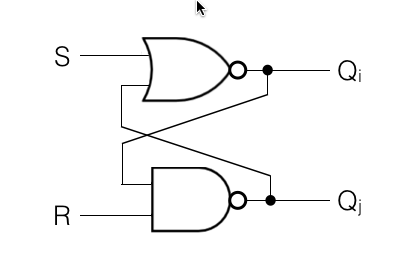CSC270 Homework 4 2016
--D. Thiebaut (talk) 10:50, 16 February 2016 (EST)
This assignment is due on 2/25/16 at 11:55 p.m. You need to submit a pdf on Moodle, in the Homework 4 section. You can work in pairs or individually.
Contents
Problem 1
- Using as few additional gates as possible, implement the function f(A, B, C, D) whose Karnaugh map is shown below, on the left, using th e multiplexer shown on the right.
- Using as few additional gates as possible, implement the function g(A, B, C, D) whose Karnaugh map is shown below, on the left, using th e multiplexer shown on the right.
Problem 2
Implement your two answers for Problem 1 in Python, and shown that your design is correct (although it might not be as minimal as required).
Your Python code should have the following features:
- It must contain a header with your name(s), and a description of what it does
- It must contain a mux() function with 6 inputs (A, B, C, D, C1, C0), and returning one value (Y).
- It must generate the truth table for f and for g.
Include the code and a copy of the output in your pdf. Please use a non-proportional font when displaying code and output: it makes it much easier for the reader to read and understand code quickly.
Problem 3
Is the circuit below a latch? Why or why not?
If you find out that it is a latch, you should be able to indicate:
- What are the inputs that are "passing" and putting the latch in a stable state.
- What input (S or R) must be activated (and how) to force a 1 on Qi
- What input (S or R) must be activated (and how) to force a 0 on Qi
Problem 4
- Can a latch be created with the upper of the two circuits above (AND with one inverted input)?
- Same question about the lower circuit (XOR with one inverted input)?
- Please explain carefully why it is possible to create a latch, or why it is not possible to create a latch with each one the circuits.



